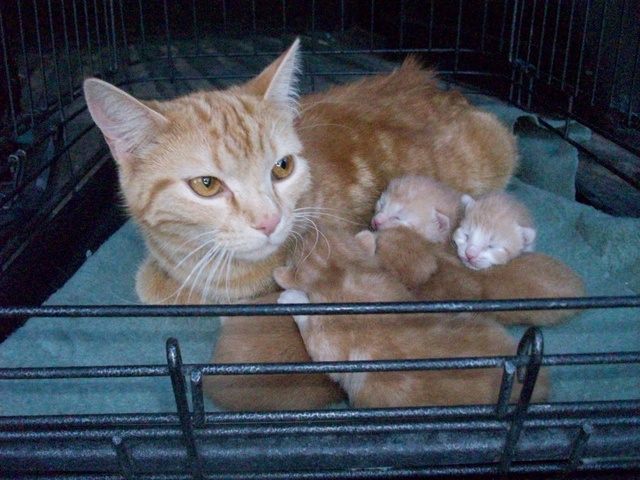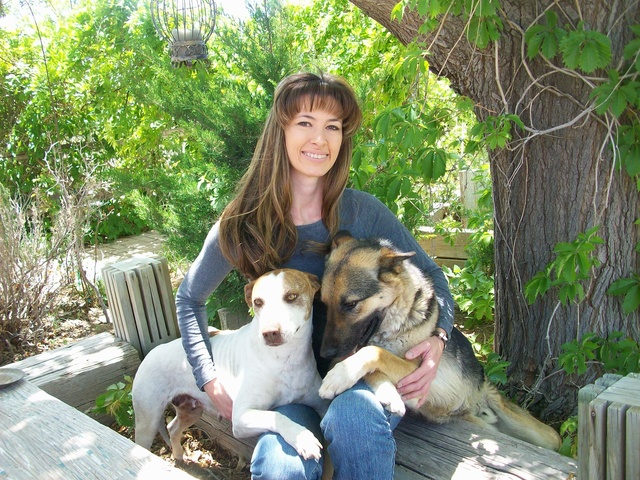When Patty Mugan goes to work, she knows beyond a shadow of a doubt that some of her friends will die on her watch. Mugan is not the only one who faces this grim forecast every day. That’s just reality for animal shelter employees. "Some days, it is very difficult to see some of the things that we see at our shelter," says the Valencia County Animal Shelter technician. "But I know that for some dogs and cats that have been abused or abandoned or on the streets for a long time, this is the best they have ever been taken care of; because they had shelter from the weather, fresh food and water, and someone that cares to spend time with them—at least for a little while."A couple of times a month, 22-year-old Mugan drives loads of homeless dogs, cats, puppies and kittens hundreds of miles to save their lives. She delivers animals sitting on death row to no-kill shelters in neighboring states, such as Colorado and Texas. “There are people waiting for them at the shelters who are always very happy to get them,” Mugan says.She drives a 2006 Chevy Silverado. A Valencia County resident donated the camper shell for the truck two years ago. The canines are transported in dog crates, the cats and kittens in carriers in the back seat. She takes 35 animals to between three and five shelters on an average trip. As of July, Mugan’s animal transfers are paid for out of the county budget. Mugan was working as a vet assistant at a clinic in Los Lunas when, in 2008, she went to the Valencia shelter to adopt a dog. She was shocked by the shabby conditions she saw, so she began volunteering there. “I would go in for two hours each morning before work and walk dogs, help clean and make kennel cards,” she says.It wasn’t easy. But she says the most difficult part was knowing the pets were condemned. “I was having a really hard time with walking the dogs and spending time with them and knowing there was a good chance that a lot of them would be euthanized."One boxer mix in particular—something about its eyes and demeanor, she recalls—touched her deeply, and it motivated her to take action. She contacted rescue groups and learned about animal transfer networks, unofficial relationships between shelters and rescuers. She found a group that would take the boxer and others like it.She organized her first trip on May 28, 2008, to Boulder, Colo. “I took 19 animals. I had no clue what I was getting into,” she says. “I know my boyfriend thought I was crazy. But I think he now understands how much it means to me for them to have a second chance, even if that means driving 500 miles each way.” One of the organizations that works with Mugan is MaxFund, a no-kill shelter in Denver. “Patty is phenomenal,” says Chelsea Manschot, the nonprofit’s adoption coordinator. “She has such passion for getting dogs and cats to where they need to be.”The Colorado adoption center works with smaller shelters and a large network of volunteers. Some animals may have to hang around for a couple of months. (In New Mexico, they often have only a few days.) Manschot says, the extra time means they usually find a home. Colorado has stricter regulations, more education funds and nowhere near the overpopulation that New Mexico’s government-run shelters have, she says. The result, Manschot says, is that most of our state’s centers are overflowing and provide a devastating environment for the animals.Mugan agrees, adding that more people need to be aware of just how many animals go to New Mexico shelters every day—and how many are euthanized because there are not enough homes. Then there’s the caregiver side of the equation. "More volunteers are needed at every shelter in New Mexico to do simple things like just walking or playing with the animals."After about a year of volunteering, Mugan was hired in February 2009 by the Valencia County shelter. She says she’s seen improvements firsthand, and she’s proud of her shelter’s progress. The success boils down to renovations, management and good people doing the best they can with scarce resources, she adds. According to Valencia County reports, 1,106 animals found homes in 2009, exceeding the shelter’s annual goal. Mugan saved that many plus another 60 with her transfers the same year. Valencia County’s stray dogs and cats are put on hold for 72 business hours, which should give their owners enough of a window to reclaim them. If strays aren’t reclaimed, they’re placed up for adoption. They can stick around as long as the animals are in good health and there’s enough space for them. “We are able to keep a lot more dogs and cats for longer time,” Mugan says. The shelter takes in about 7,000 stray animals per year. Valencia County is unusual in that it provides owner-requested euthanasia for no fee. Albuquerque does not provide this service. "We will accept any animal as an owner surrender, but we do not euthanize on demand," says Albuquerque Animal Welfare Department spokesperson Rick DeReyes. "We encourage people to see through their commitment to their animals."Valencia County had an animal euthanasia rate of around 95 percent in 2000, according to county records. By 2009, the rate had dropped to 58 percent. Still, Valencia County’s owner-requested euthanasias have increased this year, upping the number of animals put down every week to between 50 and 75. Mugan is working to offset those numbers. This year to date, she says more than 800 animals have been transferred to other regional shelters.The Valencia County Shelter is not alone in struggling to reduce high euthanasia rates. In 2009, Albuquerque city shelters took in more than 26,000 dogs and cats, and euthanized 10,347 animals, according to Albuquerque shelter reports. De Reyes says the city does not do any transfers, but the Animal Welfare Department works closely with rescue groups that transport animals out of state. “If we aren’t more aggressive about spaying or neutering our pets, Albuquerque will never be able to adopt out enough pets to offset the homeless population,” says Barbara Bruin, director of the Albuquerque Animal Welfare Department, in a news release. The city offers low- or no-cost spay and neuter vouchers to low-income residents.
Free or cheap spay and neuter optionsIf you would like to help Patty Mugan save dogs andcats, contact her at pattymugan@aol.com.Volunteer for any of Albuquerque’s many rescue groupsVolunteer at one of the city run shelters. Call 768-2000.








